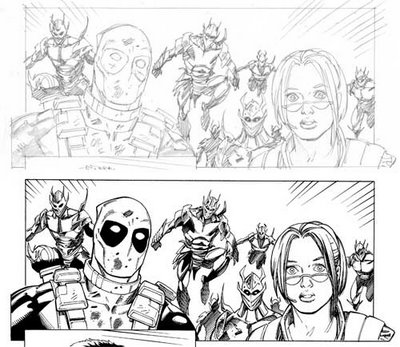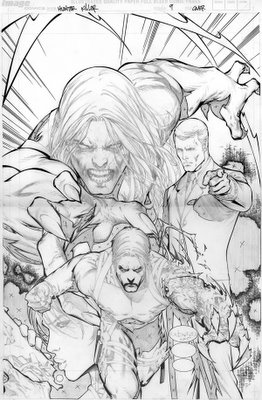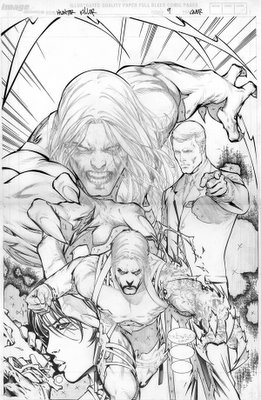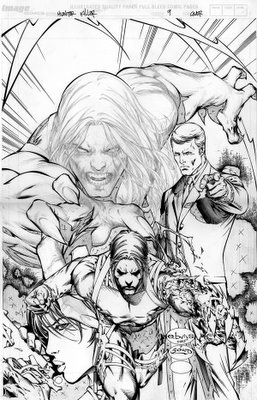
I was asked to ink
Lan Medina's
Cable/Deadpool cross-overs, from issues 25-27. It was fun, and I enjoyed inking Lan's pencils. Although there were times we were getting late, which I don't like since I am starting again as an Inker. My boss asked me to do a tryout last year. I told them I am much comfortable inking Lan's work as I enjoy colouring his pages. Anyway, I was asked if I could embellish his work, I told them I could do that, but that depends if I have much time to enhance the panels. This kept in my head and I want to do what my boss told me. So I was given three issues of Cable/Deadpool to ink. I was excited.
So we were couple or five days late, so Lan was bashing all the pages. He was quick and I was slow. I was trying to cope but what was keeping me slow is trying to embelish his work. If I do that, I'll be more late! So one should be sacrificed.
Above image was one panel on the page we did on
Cable/Deadpool #26. Lan really rushed the page and it was all in my hand to enhance it. Well, I tried but time was running out.
I was thinking if these pages were
digitally inked (
or darkened to look like it was inked)? Would they come up with better result?







